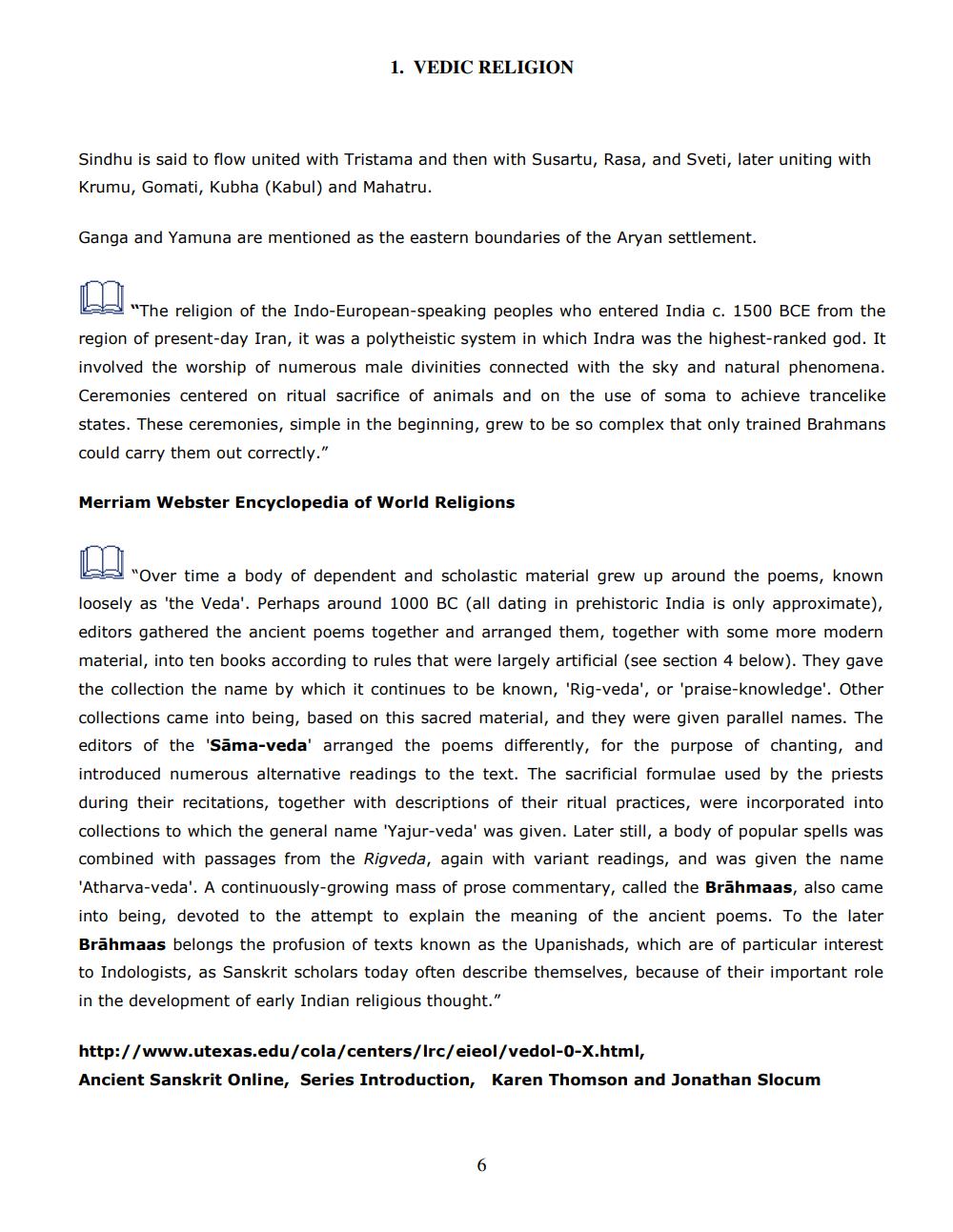________________
1. VEDIC RELIGION
Sindhu is said to flow united with Tristama and then with Susartu, Rasa, and Sveti, later uniting with Krumu, Gomati, Kubha (Kabul) and Mahatru.
Ganga and Yamuna are mentioned as the eastern boundaries of the Aryan settlement.
Le "The religion of the Indo-European-speaking peoples who entered India c. 1500 BCE from the region of present-day Iran, it was a polytheistic system in which Indra was the highest-ranked god. It involved the worship of numerous male divinities connected with the sky and natural phenomena. Ceremonies centered on ritual sacrifice of animals and on the use of soma to achieve trancelike states. These ceremonies, simple in the beginning, grew to be so complex that only trained Brahmans could carry them out correctly."
Merriam Webster Encyclopedia of World Religions
LE "Over time a body of dependent and scholastic material grew up around the poems, known loosely as 'the Veda'. Perhaps around 1000 BC (all dating in prehistoric India is only approximate), editors gathered the ancient poems together and arranged them, together with some more modern material, into ten books according to rules that were largely artificial (see section 4 below). They gave the collection the name by which it continues to be known, 'Rig-veda', or 'praise-knowledge'. Other collections came into being, based on this sacred material, and they were given parallel names. The editors of the 'Sāma-veda' arranged the poems differently, for the purpose of chanting, and introduced numerous alternative readings to the text. The sacrificial formulae used by the priests during their recitations, together with descriptions of their ritual practices, were incorporated into collections to which the general name 'Yajur-veda' was given. Later still, a body of popular spells was combined with passages from the Rigveda, again with variant readings, and was given the name 'Atharva-veda'. A continuously-growing mass of prose commentary, called the Brāhmaas, also came into being, devoted to the attempt to explain the meaning of the ancient poems. To the later Brāhmaas belongs the profusion of texts known as the Upanishads, which are of particular interest to Indologists, as Sanskrit scholars today often describe themselves, because of their important role in the development of early Indian religious thought."
http://www.utexas.edu/cola/centers/lrc/eieol/vedol-0-X.html, Ancient Sanskrit Online, Series Introduction, Karen Thomson and Jonathan Slocum




